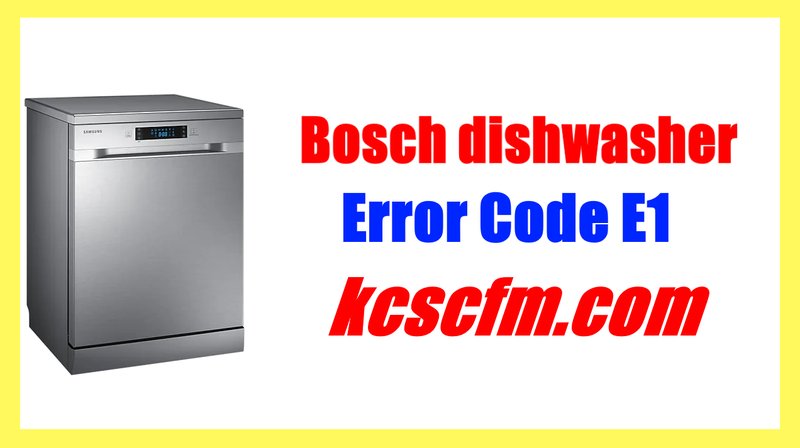
Understanding what error code E1 means is essential before deciding how to proceed. For Bosch dishwashers, this code usually indicates a problem with the water supply. In simpler terms, it’s like the dishwasher is telling you, “Hey, I’m thirsty, but there’s no water!” Ignoring such warnings might seem tempting if the dishwasher appears to be otherwise functional, but doing so can lead to more significant problems down the road. Let’s explore what you need to know about this code and how best to tackle it.
What Does Error Code E1 Mean?
Error code E1 on a Bosch dishwasher is an indication that the machine is experiencing issues with water intake. Think of it like trying to run a marathon without drinking enough water; eventually, you’re going to run into trouble. The dishwasher needs a steady water flow to do its job effectively, and when this doesn’t happen, it raises the E1 flag to get your attention.
The root cause of this error could be a variety of things. It might be due to a kink in the water inlet hose, much like a garden hose that’s been twisted and can’t let water through. Or, there might be a problem with the water supply itself – perhaps a valve isn’t turned on, or there’s low water pressure. Sometimes, it’s as simple as a blocked filter that’s preventing water from reaching the machine.
If you ignore this error, you could face long-term consequences. Just like ignoring a leaky faucet, the problem won’t fix itself. Over time, the lack of water can damage the dishwasher’s internal components or lead to incomplete cleaning cycles, leaving your dishes dirty. For peace of mind and to ensure your dishwasher’s longevity, it’s crucial to address this error promptly.
How to Troubleshoot Error Code E1
So, how do you tackle this problem? First, let’s roll up our sleeves and perform some basic checks. Start by examining the water supply. Is the water valve fully open? It might seem obvious, but sometimes the simplest issues have the easiest fixes. Ensure the valve is turned all the way on to allow maximum water flow.
Next, take a look at the water inlet hose connected to your dishwasher. Is it kinked or twisted, much like how a tangled phone charger might affect its ability to charge? Straighten out any bends and ensure the hose is secure at both ends. If the hose appears damaged or excessively worn, it might be time for a replacement.
Another potential culprit could be the filters. Over time, debris and small food particles can clog the filters, restricting water flow. Carefully remove and clean these filters, much like you would clear a clogged drain in the shower. A clean filter ensures that water can move freely into the dishwasher, preventing that pesky E1 error from reappearing.
Preventing Future Error Code E1 Issues
After resolving the E1 error, you might wonder how to prevent it from coming back. Good news! There are a few simple habits you can adopt to keep your dishwasher running smoothly. Regular maintenance is key. Much like servicing your car, a well-maintained dishwasher is less likely to encounter problems.
Make it a routine to check the water inlet hose for any signs of wear or kinks. Replace it if you notice any damage. Additionally, clean the filters regularly to ensure they remain free of debris. Think of it like brushing your teeth – a little effort each day prevents bigger issues later.
Lastly, be mindful of how you load your dishwasher. Overloading can impede water flow, leading to inefficient cleaning and potential errors. Aim for balanced loads, allowing water to circulate freely. By following these preventative tips, you can keep that E1 error at bay and enjoy the convenience of a trouble-free dishwasher.
In conclusion, while it might be tempting to brush off the error code E1, understanding and addressing it promptly can save you from bigger headaches later on. By taking a proactive approach, you ensure your Bosch dishwasher stays reliable and efficient in tackling those stacks of dishes day after day.